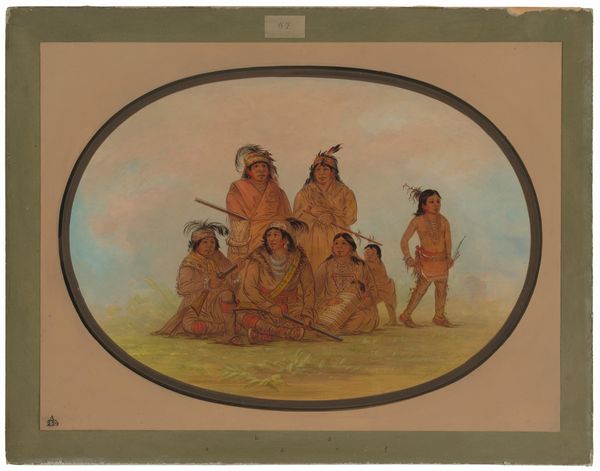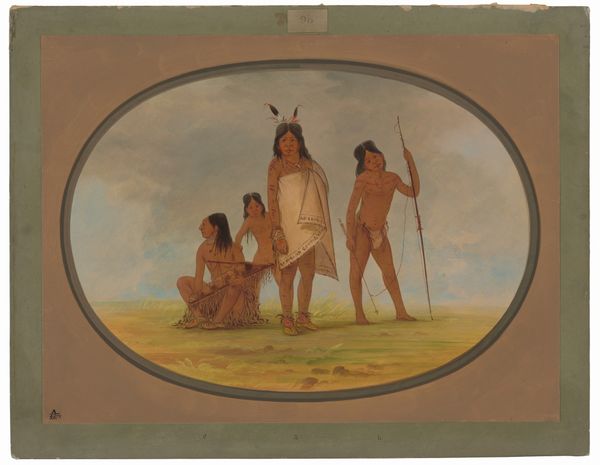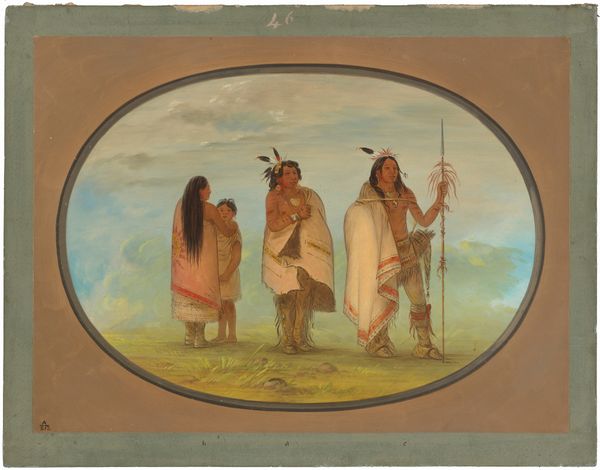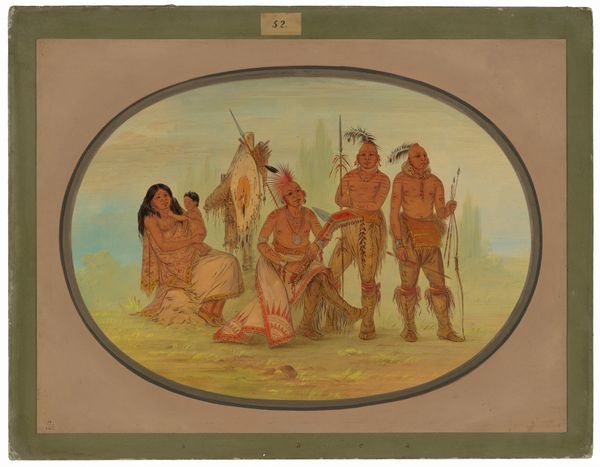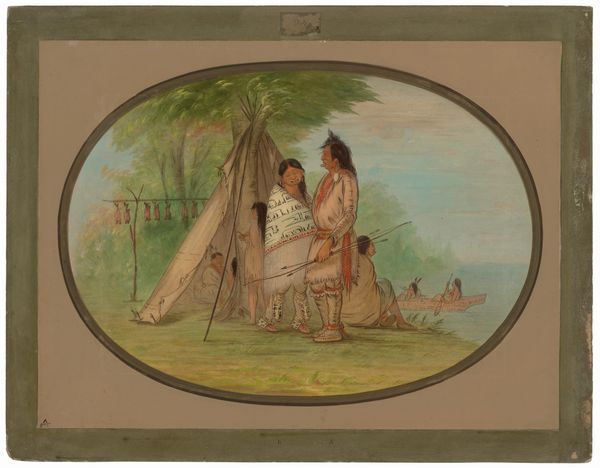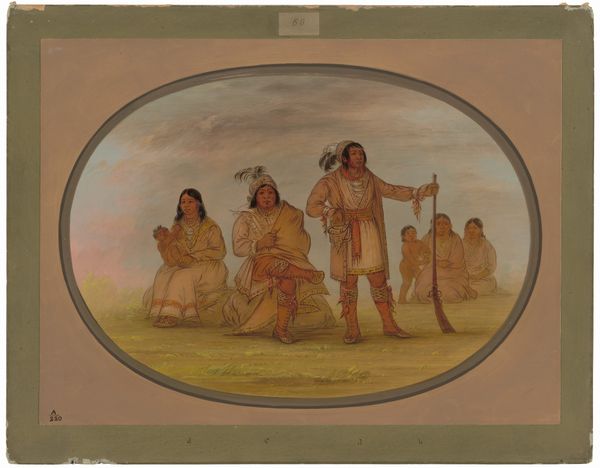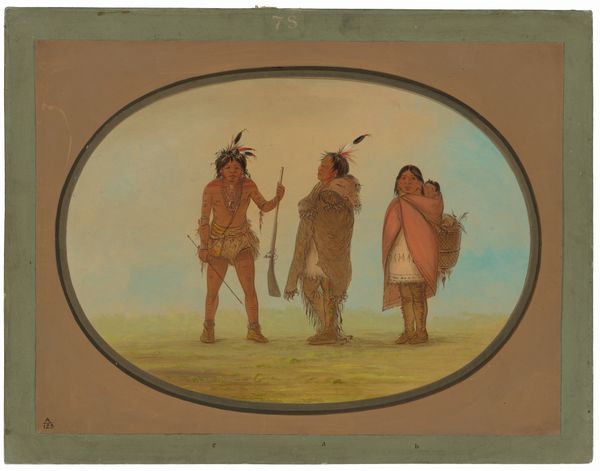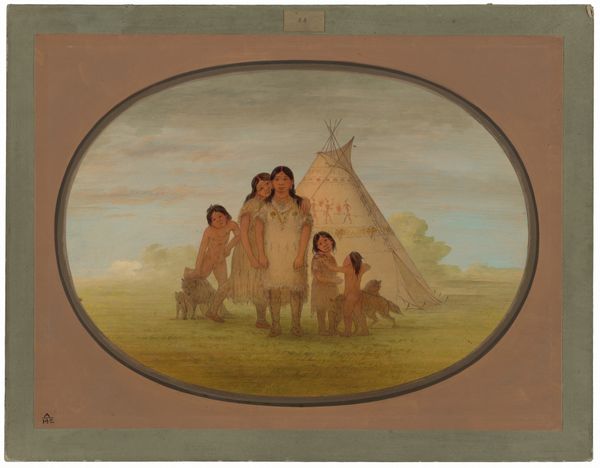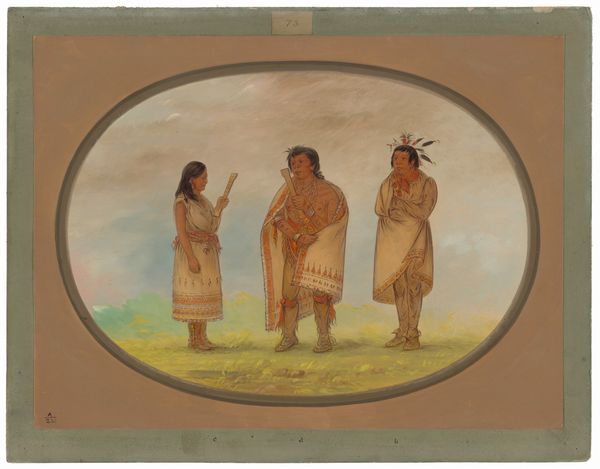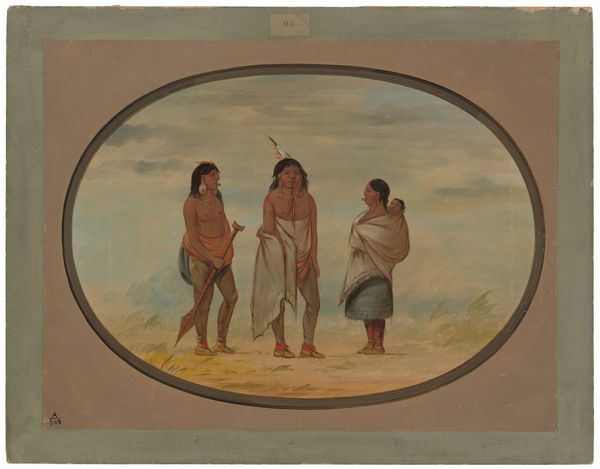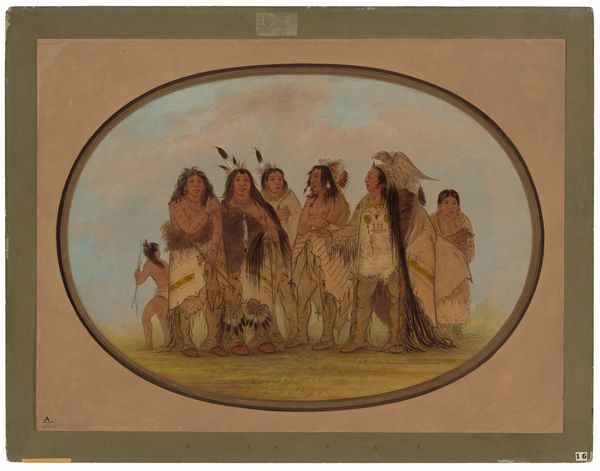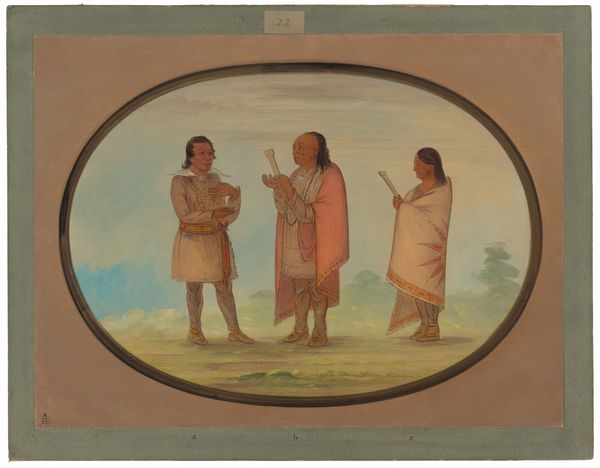
painting, gouache
#
portrait
#
water colours
#
painting
#
gouache
#
coloured pencil
#
watercolor
Dimensions: overall: 46.3 x 62.5 cm (18 1/4 x 24 5/8 in.)
Copyright: National Gallery of Art: CC0 1.0
Editor: We are looking at "A Flathead Chief with His Family," a watercolor work by George Catlin, created sometime between 1855 and 1869. The whole scene seems meticulously staged, and I’m drawn to the family's stoic expressions. As a Formalist, what elements stand out to you? Curator: The composition immediately directs my attention. Note the distinct vertical and horizontal axes—the figures versus the landscape and teepee structure. Catlin is playing with balance and symmetry but resisting a perfectly mirrored image. Observe how the chief’s central positioning and elevated height dictate the visual hierarchy of the figures in relation to each other and their position to the home, which almost emerges from the landscape. Editor: It is like a theatre scene, or something posed? How does this affect our understanding of the image? Curator: It creates an interesting tension. We see the artist's clear effort to document a scene. But at the same time the arrangement presents a construction, with flattened pictorial space that is deliberately shaped and framed. Consider how the oval frame adds another layer, further distancing us. What might that signify, do you think? Editor: Maybe this creates a distance or formality. By creating a distance from the subjects and using careful pictorial space. Now when I look back it reminds me of other types of documentation through a pictorial frame. Curator: Exactly. Catlin isn’t simply representing. He’s constructing meaning. By using these visual queues the pictorial plain reinforces the image that he has built for us. Editor: This discussion really reshapes my understanding of portraiture’s potential as not just documentation but construction and manipulation, and I wonder if Catlin was really presenting accurate portraits through his stylized presentation. Curator: Precisely. Our observations emphasize the critical nature of engaging with formal qualities to expose intended and unintended influences from the artist, historical contexts, and subject's self-representation.
Comments
No comments
Be the first to comment and join the conversation on the ultimate creative platform.
